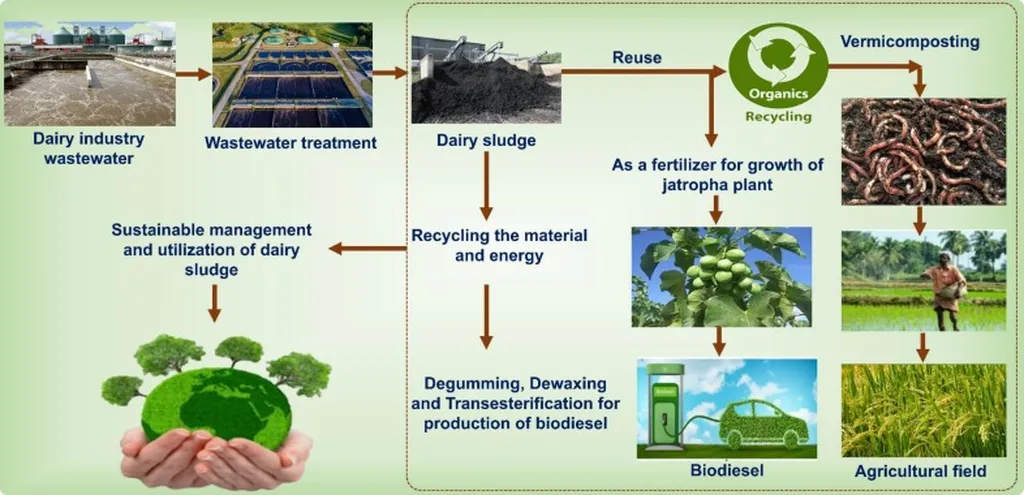In the quest for sustainable agriculture and efficient nutrient management, a groundbreaking study led by Marzena Kwapińska from the Dairy Processing Technology Centre at the University of Limerick is making waves. Published in the Chemical Engineering Journal Advances (which translates to “Chemical Engineering Journal: Advances” in English), the research delves into the hydrothermal carbonization and pyrolysis of dairy processing sludge, offering a promising path forward for the energy and agricultural sectors.
Dairy processing sludge, a byproduct of the dairy industry, has long been an environmental challenge. However, Kwapińska and her team are turning this liability into an asset. “By applying hydrothermal carbonization and pyrolysis, we can transform dairy processing sludge into valuable products like hydrochar and biochar,” Kwapińska explains. These processes not only reduce waste but also produce materials that can enhance soil health and sequester carbon, contributing to climate resilience.
The study builds on existing knowledge from municipal sewage sludge treatment, adapting and optimizing these technologies for dairy processing sludge. “The properties of dairy processing sludge differ significantly from those of sewage sludge,” Kwapińska notes. “This requires a tailored approach to maximize the benefits of these thermochemical treatments.”
Hydrothermal carbonization and pyrolysis yield a range of products, including hydrochar, biochar, and pyrolysis gas. Hydrochar, a carbon-rich solid, can be used as a soil amendment to improve water retention and nutrient availability. Biochar, another carbon-rich product, offers similar benefits and has the added advantage of long-term carbon sequestration. Pyrolysis gas, a byproduct of the process, can be used as a renewable energy source, providing a clean energy alternative for dairy processing facilities.
The integration of these processes within wastewater treatment plants in dairy processing facilities presents a transformative opportunity. “This approach aligns with global goals for nutrient recycling and sustainable agriculture,” Kwapińska says. “It’s a win-win situation: reducing waste and producing valuable products.”
The research also highlights critical knowledge gaps and proposes strategies to accelerate industrial adoption and policy integration. By addressing these gaps, the dairy industry can move towards more sustainable and efficient practices, benefiting both the environment and the bottom line.
As the world grapples with the challenges of climate change and resource depletion, innovations like these are more important than ever. Kwapińska’s work offers a glimpse into a future where waste is minimized, resources are efficiently recycled, and agriculture is both sustainable and productive. The study not only advances our understanding of thermochemical treatments but also paves the way for practical applications that can reshape the energy and agricultural landscapes.
In the words of Kwapińska, “This is just the beginning. The potential for these technologies is vast, and with further research and investment, we can unlock even greater benefits for the environment and the economy.” As the industry looks to the future, this research serves as a beacon of hope and a call to action, inspiring stakeholders to embrace innovation and drive towards a more sustainable future.

